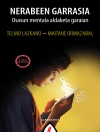Care of Children Exposed to the Traumatic Effects of Disaster addresses the effects of disaster on children and their families, and explores the various resources that mental health practitioners and others who routinely interact with children, such as teachers, first responders, health care professionals, child care providers, child welfare professionals, and faith-based community members, can use to help them in their hour of need.
The three co-authors have had extensive, and intensive, experience working with disaster victims and preparing both professionals and laypeople to intervene effectively in extreme events. Those on the front lines will find the book’s practical and insightful observations, techniques, and strategies indispensible. Specifically, the book Explains not only how to provide basic support services and brief interventions but how to recognize children in distress, to actively support positive coping skills, to monitor children’s well-being in the aftermath of disaster and to identify those who need more intensive evaluation and intervention. Encompasses a broad range of disasters, from the ’natural’ (such as earthquakes, tsunamis, tornadoes, and hurricanes) to the human generated (such as wars, civil strife, ethnic conflict, and acts of terrorism). Provides a timeline of psychological responses to disaster, with its impact phase and cascade of secondary adversities in the aftermath of disaster, which establishes helpful benchmarks to those providing support. Includes numerous tables and figures that convey complex information in an intuitive, easy-to-understand way.
Care of Children Exposed to the Traumatic Effects of Disaster emphasizes the critical importance of effective therapeutic intervention — which restores function, enhances recovery, and creates a safe and secure environment — and explains how to mobilize family and social supports to achieve that goal.
Innehållsförteckning
About the Authors Preface Acknowledgments Chapter 1. Disaster, Stress, and Trauma Chapter 2. Natural and Human-Generated Disasters Chapter 3. The Context of Trauma Chapter 4. Children’s Psychological Responses to Disasters Chapter 5. Children With Special Needs During Disasters Chapter 6. Traumatic Bereavement Chapter 7. Child and Family Assessment Chapter 8. Interventions Chapter 9. Generally Accepted Truths: The Psychological Effects of Trauma on Children Index
Om författaren
Jon A. Shaw, M.D., M.S., is Professor of Psychiatry and Behavioral Sciences and Chief of Child and Adolescent Psychiatry and Behavioral Sciences in the Department of Psychiatry and Behavioral Sciences, and Professor of Clinical Pediatrics at the Miller School of Medicine of the University of Miami in Miami, Florida.Zelde Espinel, M.D., M.A., M.P.H., is Co-Director of the Center for Disaster and Extreme Event Preparedness (DEEP Center) in the Department of Epidemiology and Public Health at the Miller School of Medicine of the University of Miami in Miami, Florida.James M. Shultz, M.S., Ph.D., is Director of the Center for Disaster and Extreme Event Preparedness (DEEP Center) in the Department of Epidemiology and Public Health at the Miller School of Medicine of the University of Miami in Miami, Florida.










